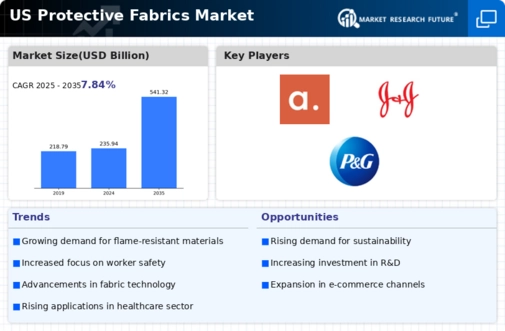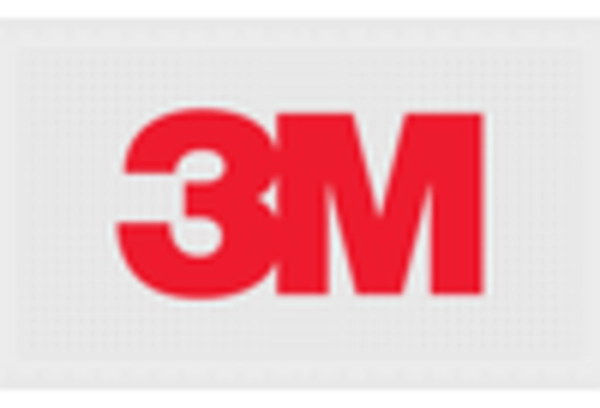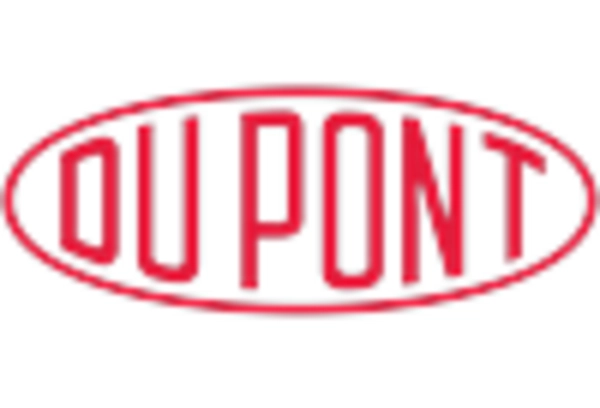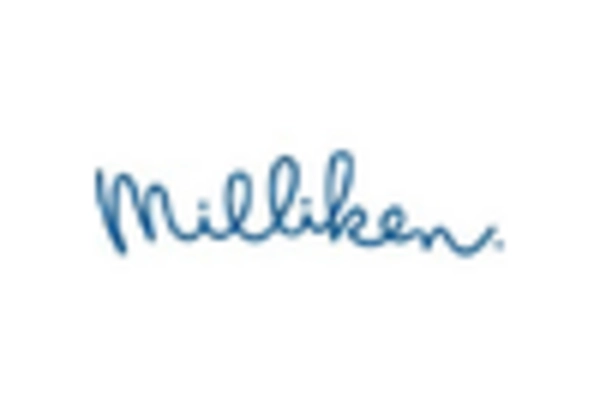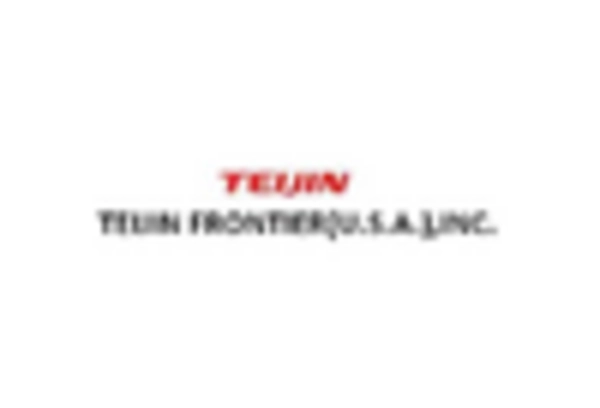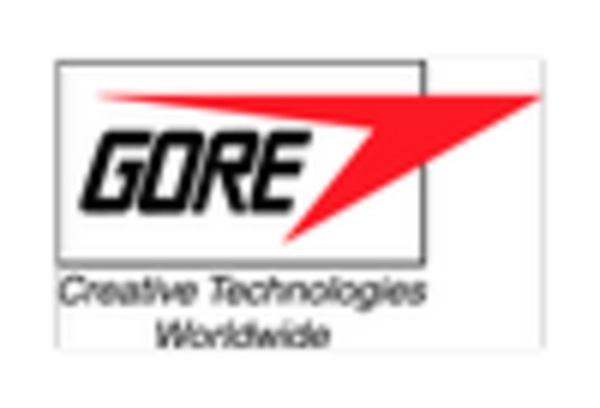Rising Demand for Safety Gear
The protective fabrics market experiences a notable surge in demand for safety gear across various industries, including construction, manufacturing, and healthcare. This trend is driven by an increasing awareness of workplace safety and the necessity for protective clothing that meets stringent safety standards. In 2025, the market for personal protective equipment (PPE) is projected to reach approximately $60 billion in the US, with protective fabrics playing a crucial role in this growth. The emphasis on worker safety and the implementation of safety regulations contribute to the expansion of the protective fabrics market, as companies seek to provide their employees with reliable and effective protective gear.
Expansion of E-commerce Platforms
The expansion of e-commerce platforms is transforming the protective fabrics market by providing consumers with greater access to a wide range of protective gear. Online retailing allows for a more extensive distribution of protective fabrics, catering to both individual consumers and businesses. This shift is particularly relevant in the context of the growing trend towards remote work and online shopping, which has accelerated since 2025. E-commerce platforms enable manufacturers to reach a broader audience, thereby increasing sales opportunities. As a result, the protective fabrics market is likely to benefit from this trend, as more consumers seek convenient purchasing options for their protective clothing needs.
Growth in Industrial Applications
The protective fabrics market is significantly influenced by the growth in industrial applications, particularly in sectors such as oil and gas, chemical processing, and manufacturing. As industries expand, the need for specialized protective clothing that can withstand hazardous environments becomes increasingly critical. The market for protective fabrics in industrial applications is expected to grow at a CAGR of around 7% from 2025 to 2030. This growth is attributed to the rising number of workplace accidents and the subsequent demand for fabrics that offer enhanced protection against chemical spills, flames, and other hazards. Consequently, the protective fabrics market is poised for substantial growth as industries prioritize safety.
Technological Innovations in Fabric Production
Technological innovations in fabric production are reshaping the protective fabrics market, leading to the development of advanced materials that offer superior protection and comfort. Innovations such as nanotechnology and smart textiles are enhancing the performance of protective fabrics, making them lighter, more durable, and more breathable. These advancements are likely to attract a broader consumer base, including those in sectors like sports and outdoor activities, where protective gear is essential. The integration of technology in fabric production not only improves the functionality of protective clothing but also aligns with the growing consumer preference for high-performance materials, thereby driving the protective fabrics market forward.
Increased Focus on Environmental Sustainability
The protective fabrics market is witnessing a shift towards environmentally sustainable practices, as consumers and manufacturers alike become more conscious of their ecological footprint. This trend is reflected in the growing demand for fabrics made from recycled materials and those that are biodegradable. Companies are increasingly investing in sustainable production methods, which not only appeal to eco-conscious consumers but also comply with emerging regulations aimed at reducing environmental impact. The market for sustainable protective fabrics is expected to grow significantly, potentially reaching $10 billion by 2030. This focus on sustainability is likely to reshape the protective fabrics market, encouraging innovation and responsible sourcing.


